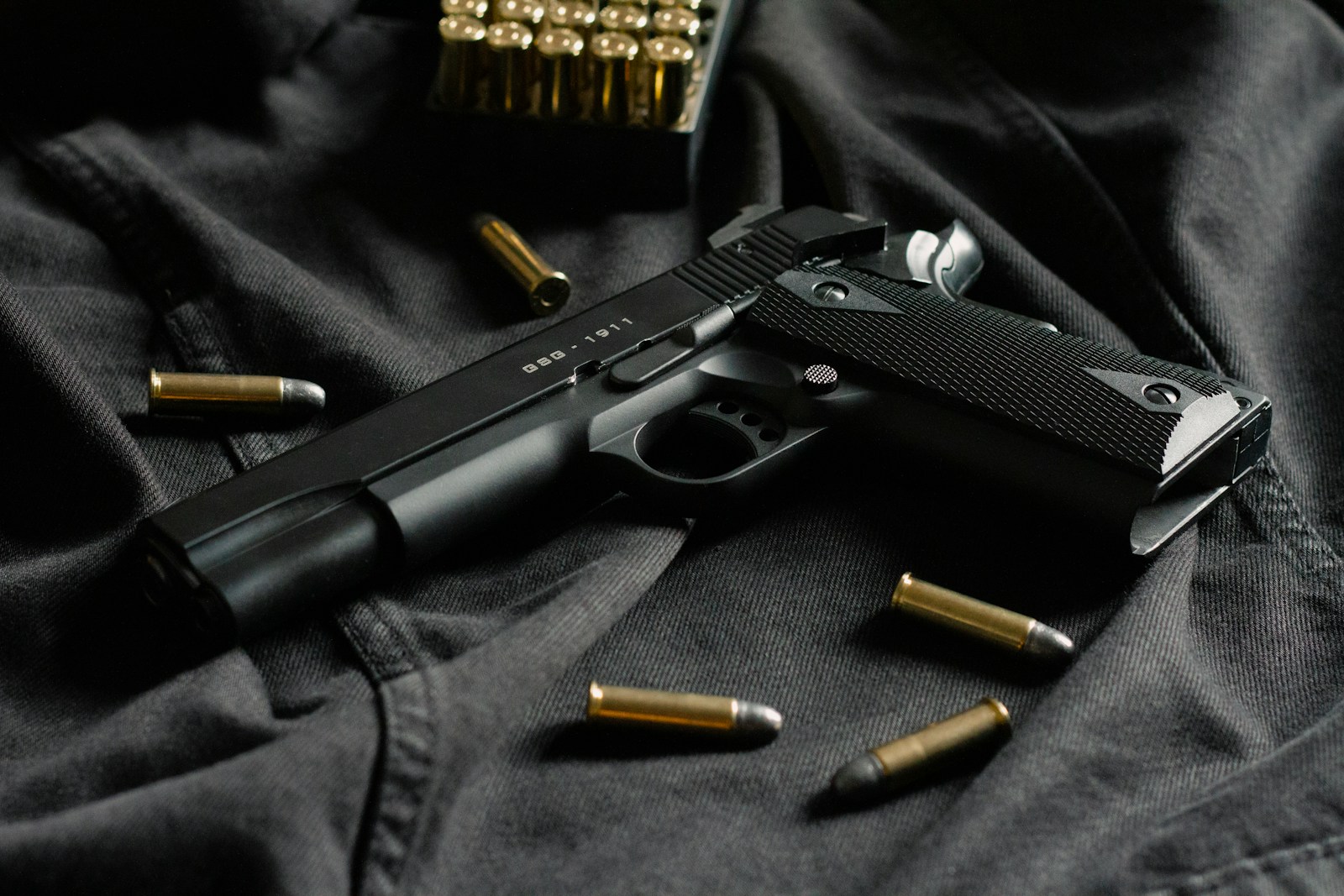
The question of where gun ownership is highest in the United States, particularly concerning the prevalence in rural versus urban areas, is a complex one, fraught with methodological challenges and often overshadowed by broader discussions of firearm violence. While the topic is frequently debated in policy circles and public discourse, a definitive, nationally representative answer to the exact rates of rural and urban gun ownership remains elusive in many scientific analyses. The data available offer a nuanced picture, suggesting that while gun ownership undeniably spans all types of American communities, understanding its geographic distribution requires careful consideration of what is actually being measured, and with what rigor.
Indeed, a review of assembled analyses repeatedly highlights a significant methodological roadblock: none of the supplied documents directly measure or compare rural and urban gun ownership rates nationwide. This means that, despite widespread interest, the existing evidence base cannot support a definitive, confident comparison of gun ownership rates between these distinct geographic categories. Several critical assessments point to shortcomings in the 2021 National Firearms Survey’s methodology, arguing that issues related to sampling, question design, and inference undermine its reliability for estimating ownership or defensive uses. When the most central national survey in these materials is disputed, it leaves a considerable void, lacking a robust, uncontested dataset to answer the rural/urban ownership question with confidence.
These methodological critiques carry significant implications for any attempt to identify a rural-urban split in gun ownership. Law review and critique pieces underscore that measurement error and methodological bias can inadvertently produce misleading regional or demographic patterns if not adequately addressed. For instance, if a survey’s sampling frame fails to represent certain geographies accurately or misclassifies respondents’ locations, any estimated differences between rural and urban areas become immediately suspect. The critiques argue vehemently that researchers bear the responsibility of transparently reporting sampling weights, nonresponse adjustments, and precise geographic definitions before any claims about urban–rural contrasts can be credibly made. Given these crucial cautions, the provided materials imply that any assertion about rural versus urban ownership derived from contested surveys should be treated as tentative, demanding a higher standard of evidence.

Further complicating the picture are studies that focus on specific subpopulations, offering narrow slices of understanding rather than a comprehensive view. For example, two supplied pieces delve into the behaviors and attitudes of students carrying weapons and non‑hunting firearm owners or sport shooters who support wildlife funding. While these studies certainly illuminate heterogeneity within ownership communities, shedding light on specific groups—students in educational contexts or sport/non‑hunting owners who may reside in diverse geographies—they do not, by design, measure or compare overall rural and urban ownership prevalence at a population level. Their value lies in revealing the varied motivations and contexts of gun ownership within bounded groups, rather than establishing broader geographic distinctions that can be universally applied.
Moreover, spatial studies of violence, while providing valuable context, do not equate to insights into ownership prevalence. Analyses from Syracuse and Kansas City, along with a book excerpt, offer spatial perspectives on firearm violence, such as the stability of violence patterns in Syracuse during the COVID-19 pandemic, higher firearm violence in historically redlined Kansas City neighborhoods, and interpretations of why shootings tend to cluster in unstable, high‑risk areas. These works establish crucial links between place, poverty, and historical disinvestment, correlating them with violence outcomes. However, the materials distinctly suggest that violence distribution should not be conflated with ownership rates. To do so, they warn, risks significant policy and analytical errors, as gun violence and gun ownership are related but ultimately distinct phenomena requiring separate lines of inquiry.
Adding another layer of complexity, the supplied documents reveal a landscape of multiple viewpoints and potential agendas influencing the reported findings. Academic critics advocate for stringent methodological rigor, while advocacy or interest groups frame owner attitudes toward conservation funding, and neighborhood-level researchers emphasize the structural causes of violence. Each source, therefore, advances different priorities—whether it be scientific validity, political or programmatic support, or social justice framing—which inevitably shapes the metrics collected and reported. The presence of these divergent aims underscores the critical need for multi‑source triangulation before any confident assertions regarding rural/urban ownership differences can be made.
To genuinely resolve the question of rural versus urban ownership rates, a robust and comprehensive approach is imperative. Researchers would need to employ nationally representative surveys featuring clear geographic coding, validated ownership measures, and transparent weighting and nonresponse correction—elements that the supplied critiques specifically find lacking in their contested examples. A truly defensible methodology would combine household surveys with administrative registration data, where available, and integrate small-area estimation techniques, all complemented by sensitivity analyses designed to address potential sampling bias. In essence, the supplied materials serve less as definitive evidence of a rural–urban gap and more as a detailed checklist of what essential data and measurement standards are currently missing from the conversation.

Given these significant limitations, policymakers and commentators who cite urban–rural ownership differences should be subjected to rigorous scrutiny regarding their data sources and methods. The materials clearly demonstrate that strong claims demand commensurate evidence, yet the collection primarily offers targeted studies and methodological rebuttals rather rather than a clean, national comparison of ownership. Consequently, readers should actively demand clarity on geographic definitions, sampling frames, and the crucial distinction between ownership prevalence and spatial patterns of violence before accepting any urban-rural assertions as conclusive. The documents in hand ultimately do not answer the user’s core question; instead, they document measurement disputes, present subpopulation snapshots, and analyze violence geography without definitively measuring ownership by rurality. To achieve a defensible rural-urban comparison, researchers and journalists must seek or commission recent, nationally representative surveys with validated measures and transparent methodological documentation, disclosing all limitations when reporting any observed differences.
Despite the complexities in precisely mapping gun *ownership* across the rural-urban continuum, a notable cross-sectional time-series study has illuminated significant variability in *firearm mortality risk* by county type across the full rural-urban continuum in the U.S. This comprehensive study, challenging a widely held notion that death by firearms is predominantly an urban issue, reveals that gun violence impacts all U.S. communities in comparably negative ways, though through different mechanisms. This is a crucial distinction from gun ownership prevalence, yet it offers profound insights into the differing burdens of firearm violence across the nation.
The study, which spanned two decades from January 1, 2001, to December 31, 2010, and from January 1, 2011, to December 31, 2020, utilized multiple cause-of-death data files from the National Center for Health Statistics’ National Vital Statistics System. These meticulously compiled data files, created through the universal registration of death certificates at the county level, allowed researchers to categorize firearm deaths into gun homicides and gun suicides. Each decedent was assigned to the U.S. county where their gun homicide or suicide occurred. To classify U.S. counties along the rural-urban continuum, the researchers employed a 9-category ordinal variable, assigned annually to each county, obtained from the U.S. Department of Agriculture Economic Research Service. This robust variable distinguished counties based on both population density and proximity to metropolitan areas, providing a granular classification for analysis. The study carefully accounted for confounding factors such as median age, median income, percentage of White decedents, percentage of decedents below the federal poverty level, percentage of female-led households, percentage of decedents who completed high school, a measure of state-level gun laws, and fixed effects per year, with a population offset per county, ensuring a comprehensive adjustment of its findings.
The findings from this compelling research reveal several striking patterns. Descriptively, across all county types and in both decades examined, per capita gun suicides were consistently more common than per capita gun homicides. More significantly, the study found that the most rural counties consistently had higher rates of firearm death compared with the most urban counties. Furthermore, firearm death rates saw a meaningful increase in the 2011-2020 decade compared with 2001-2010, a rise primarily driven by an increase in gun suicides. This suggests a deepening divide and a changing nature of firearm violence across the continuum.

After meticulous adjustment for various covariates, the statistical comparisons further solidified these descriptive observations. Between 2001 and 2010, the two most rural county types exhibited notably higher total firearm death rates than the most urban counties. For instance, the most rural county type (type 9) had a 25% (95% CI, 9%-43%) higher overall firearm death rate compared with the most urban county type (type 1). Breaking this down further, the most rural county type showed a 54% (95% CI, 40%-71%) higher gun suicide death rate but a 50% (95% CI, 34%-74%) lower gun homicide death rate compared with the most urban counties. This dichotomy highlights that while rural areas may experience fewer gun homicides, they face a disproportionately higher burden of gun suicides.
The trends continued and, in some respects, intensified in the subsequent decade. Between 2011 and 2020, all county types registered higher total firearm death rates than the most urban counties. Specifically, the most rural county type (type 9) demonstrated a 37% (95% CI, 22%-55%) higher overall firearm death rate compared with the most urban county type (type 1). The disparity in suicide rates also grew, with the most rural counties experiencing a 76% (95% CI, 58%-95%) higher gun suicide death rate and a 46% (95% CI, 28%-76%) lower gun homicide death rate compared to the most urban counties. These figures challenge the prevailing narrative that firearm deaths are primarily an urban crisis, revealing a profound and increasing burden on rural communities, particularly concerning suicides.
The discussion section of the study emphasized that while it was a cross-sectional time-series design with inherent limitations, careful measures were taken to account for year effects and variables that could confound the association between urban-rural status and firearm deaths. The authors reiterated that gun suicides consistently outnumber gun homicides each year in the U.S., and critically, the risk of gun suicides in the most rural U.S. counties significantly exceeds the risk of gun homicides in the most urban U.S. counties. This marks a notable shift from previous research, which found no difference in total intentional firearm deaths between the most urban and rural counties in the 1990s. The current study definitively concludes that the divide in total intentional firearm deaths between urban and rural counties is widening, with rural counties shouldering an increasing share of the burden. Contrary to popular belief, firearm deaths are statistically more likely in small towns and rural areas, not predominantly in major cities, marking a crucial re-evaluation of the geography of gun violence.

Moving beyond the granular analysis of firearm mortality, it is essential to consider the broader landscape of gun ownership in the United States, which provides a crucial backdrop to any discussion of rural-urban differences. The U.S. stands out globally for its high rate of gun ownership, a fact deeply woven into the nation’s historical, cultural, and legal fabric. Overall, a 2020 Gallup poll indicates that 32% of U.S. adults personally own a gun, and a larger share, 44%, live in a gun-owning household. These figures, when scaled nationally, suggest an astonishing prevalence of firearms, with an estimated 120.5 firearms per 100 people in the U.S., totaling just over 400 million guns across the country. This sheer volume underscores the unique position of the United States on the global stage regarding civilian firearm possession.
The Gallup poll further breaks down gun ownership across various demographic groups, offering initial insights into where ownership is more common. Men, for instance, are significantly more likely to personally own a gun (45%) compared to women (19%), and also more likely to live in a gun-owning household (51% vs. 35%). Age groups show some variation, with adults aged 30-49 and 65+ having slightly higher personal ownership rates than younger adults (18-29). Education levels also correlate, with college graduates showing a higher percentage of gun-owning households (50%) than those with postgraduate degrees (36%) or no college (41%). Income levels too present differences, with higher-income households ($100,000+) reporting more gun ownership (38% personal, 55% household) than lower-income brackets.
Race and ethnicity reveal a clear disparity, with White (non-Hispanic) individuals having substantially higher rates of personal gun ownership (38%) and living in gun-owning households (51%) compared to non-White individuals (18% personal, 28% household). Regionally, the South stands out with the highest rates of personal gun ownership (40%) and gun-owning households (53%), followed by the Midwest (34% personal, 50% household), while the East shows the lowest rates (21% personal, 28% household). These regional differences hint at underlying cultural and historical factors that contribute to varied gun ownership patterns across the country.
Crucially, the Gallup poll also offers an initial glimpse into gun ownership by community type, foreshadowing the deeper rural-urban distinctions that define much of the national conversation. It reports that 48% of adults in a town or rural area personally own a gun, and 61% live in a gun-owning household. This contrasts sharply with those in big or small cities, where only 23% personally own a gun and 32% live in a gun-owning household. Suburbs fall in between, with 25% personal ownership and 41% household ownership. These figures provide a preliminary, yet powerful, indication of the significant divergence in gun ownership between urban and rural settings, suggesting that geographical location is a primary determinant of gun prevalence.
The foundational reasons for America’s unusually high rate of gun ownership, particularly when compared to other nations, are deeply embedded in its history, cultural identity, legal framework, and societal perceptions. The very founding of the U.S. during a period demanding self-reliance and local militias for survival and defense laid an early groundwork for firearm importance. The frontier lifestyle, requiring guns for hunting and protection, further solidified their role. This historical context culminated in the Second Amendment to the Constitution, ratified in 1791, which enshrines the right to bear arms—a reflection of the perceived importance of armed citizens in maintaining personal security and resisting perceived tyranny. This constitutional guarantee sets the U.S. apart from many other nations and remains a cornerstone of its unique gun culture.
Gun ownership is also profoundly ingrained in American cultural identity. For many, firearms are more than mere tools; they symbolize individualism, self-reliance, and personal freedom. In rural areas especially, guns are often seen as essential for hunting, sport, and protection, frequently passed down through generations as a cherished family tradition. This cultural resonance means that gun ownership is not merely a legal right but a deeply personal and familial practice for a significant portion of the population. The legal framework of the U.S., characterized by relatively permissive gun laws compared to many other countries, facilitates this widespread ownership. While federal regulations exist, state-level laws vary immensely, generally making ownership easier and more widespread. Landmark Supreme Court decisions, such as District of Columbia v. Heller in 2008, have affirmed an individual’s right to own firearms for self-defense, further entrenching the legal basis for broad civilian gun ownership.
The influence of the powerful gun industry and its lobbying efforts also plays a substantial role. The U.S. firearm manufacturing industry is robust, producing millions of guns annually, which ensures a steady supply and accessibility. Organizations like the National Rifle Association (NRA) are formidable advocates for gun rights, actively opposing stricter gun control measures and wielding considerable influence over public opinion and policymaking. Moreover, perceptions of safety are a significant driver for many Americans; gun ownership is widely viewed as a means of ensuring personal safety, particularly in areas where law enforcement response times might be perceived as slow. Paradoxically, even high-profile tragedies like mass shootings can, at times, lead to increased gun sales as individuals feel a heightened need to arm themselves for protection, reinforcing a cycle of demand. This complex interplay of factors contributes to a distinct American gun landscape that is profoundly different from those in countries with stricter gun control, which often prioritize collective security over individual gun rights and thus exhibit far fewer guns per capita and lower rates of gun-related violence. The patchwork of federal, state, and local laws, lacking national uniformity, further exacerbates this, often resulting in vastly easier access to firearms in certain regions, contributing to the overall prevalence and geographic variations.

While the precise national mapping of gun ownership across the rural-urban continuum faces inherent methodological challenges, direct evidence from other robust surveys offers compelling insights into the stark divergences in gun ownership rates and attitudes across different community types. Moving beyond the initial glimpse provided by the Gallup poll, a new Pew Research Center survey vividly illustrates this divide, confirming that gun ownership is indeed particularly common in the country’s rural expanses.
According to this Pew Research Center survey, a notable 46% of adults residing in rural areas report personally owning a gun. This figure stands in sharp contrast to the 28% of adults in suburban communities and a mere 19% in urban areas who say the same. These statistics underscore a profound geographical disparity, suggesting that the context of one’s community plays a significant role in the likelihood of gun ownership.
Delving deeper, the survey reveals not just a difference in prevalence, but also in the very nature of gun ownership. A substantial three-quarters of rural gun owners, 75% to be exact, indicate they own more than one gun, a figure significantly higher than the 48% of urban gun owners who report multi-gun ownership. This suggests a more deeply integrated gun culture in rural settings, where firearms may serve multiple purposes and be accumulated over time.





